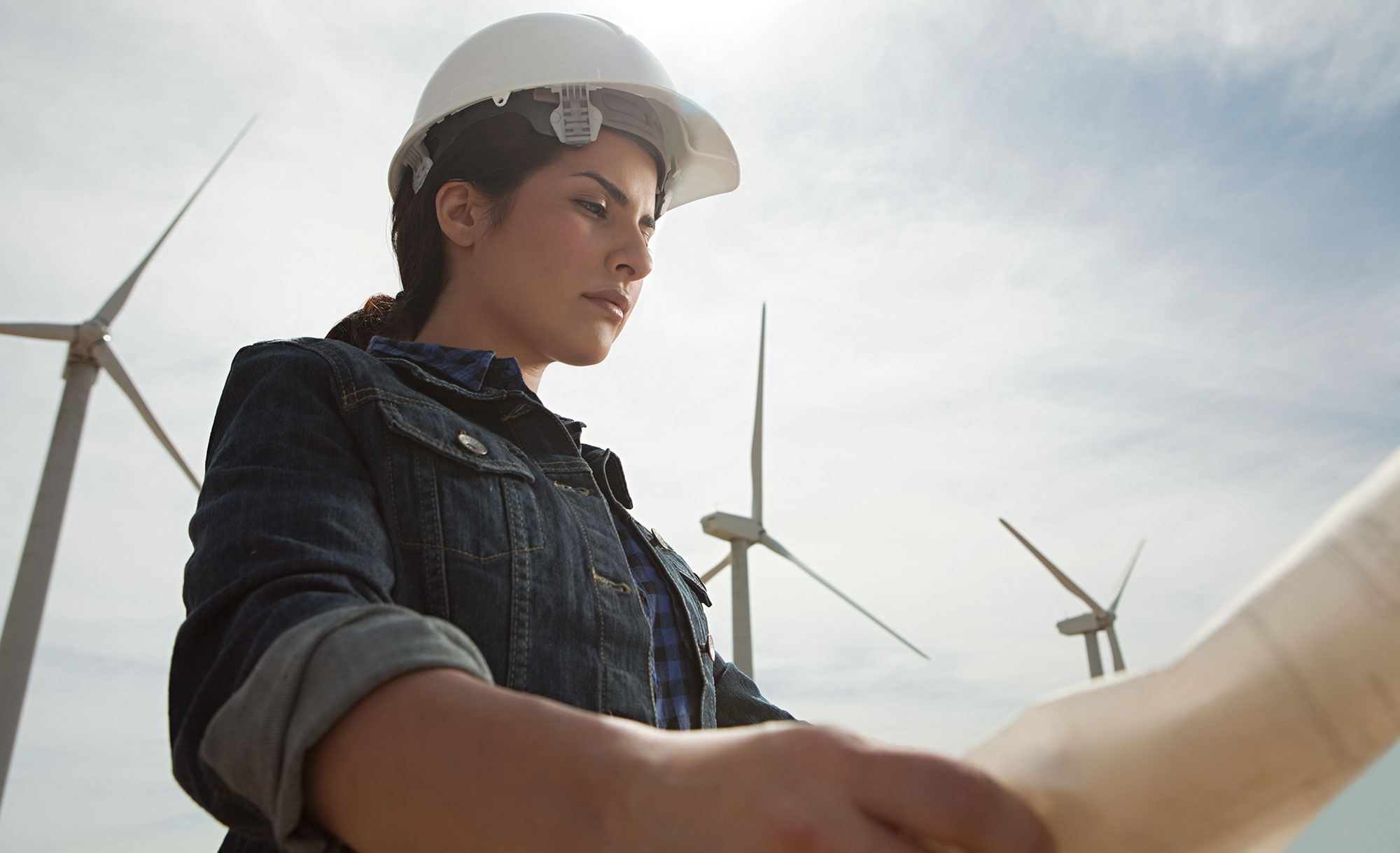
Centering workers in the climate transition is integral to achieving a just clean energy future. As those most impacted by climate change, workers need a voice in policies responding to it and need skills and support to succeed in a decarbonizing world.
Just Transition will institutionalize the role of workers in policymaking in the clean energy transition, including the role of collective bargaining. It is a key strategy within short- and long-term climate plans to respond to the needs of workers and communities so that governments can accelerate the shift to a net-zero economy.
How Does Just Transition Work?
Just Transition:
- Creates good green jobs in which workers’ rights are respected and protected across supply chains.
- Ensures that workers are at the table when there’s a discussion about the climate agenda.
- Provides workers training so they are up to speed with the new skillsets for new industries, and social protection to ensure their needs are met during the transition.
- Encourages companies’ investment in green industries and low carbon sectors while also promoting quality jobs and decent work in these industries.
- Promotes investment in communities impacted by the transition.
The U.S. Government’s Role
The U.S. government works both domestically and internationally to ensure a Just Transition to a low-carbon future.
At home, Just Transition means:
- The Bipartisan Infrastructure Law and Inflation Reduction Act invest hundreds of billions of dollars into the development and deployment of clean energy technologies, workforce development programs, and protections for disadvantaged communities. To help with this mission, the Department of Labor announced the Good Jobs Initiative which improves job quality and equity across our economy.
- President Biden also created the U.S. Government Interagency Working Group on Coal and Power Plant Communities and Economic Revitalization which identified communities across the country hard-hit by coal mine and power plant closures and is taking steps to leverage federal investments to support these communities.
Globally, Just Transition means:
- Advocating in multilateral forums for international commitments to Just Transition policies, including through COP28 and the International Labor Conference.
- Bringing concepts grounded in the ILO Just Transition guidelines into trade and economic agreements. For example, the U.S. is working to ensure that just transition forms a key part of the Indo-Pacific Economic Framework’s pillar on the Clean Economy and in other international engagements, and we affirm our commitment to worker-centered trade policies.
- Raising awareness of child labor and forced labor in green energy supply chains and working to eradicate these abuses.

Further Resources
- Guidelines for a Just Transition towards environmentally sustainable economies and societies for all (ILO)
- UN Article: A Just Green Transition: Concepts and Practices So Far
- Biden-Harris Administration Announces $15.5 Billion to Support a Strong and Just Transition to Electric Vehicles, Retooling Existing Plants, and Rehiring Existing Workers | Department of Energy
- Building a Clean Energy Economy: A Guidebook to the Inflation Reduction Act’s Investments in Clean Energy and Climate Action
- Promoting a Just Transition for All Workers
- Supporting the Conditions for a Just Transition Internationally
- Executive Order on Tackling the Climate Crisis at Home and Abroad
- FACT SHEET: President Biden’s Executive Actions on Climate to Address Extreme Heat and Boost Offshore Wind
